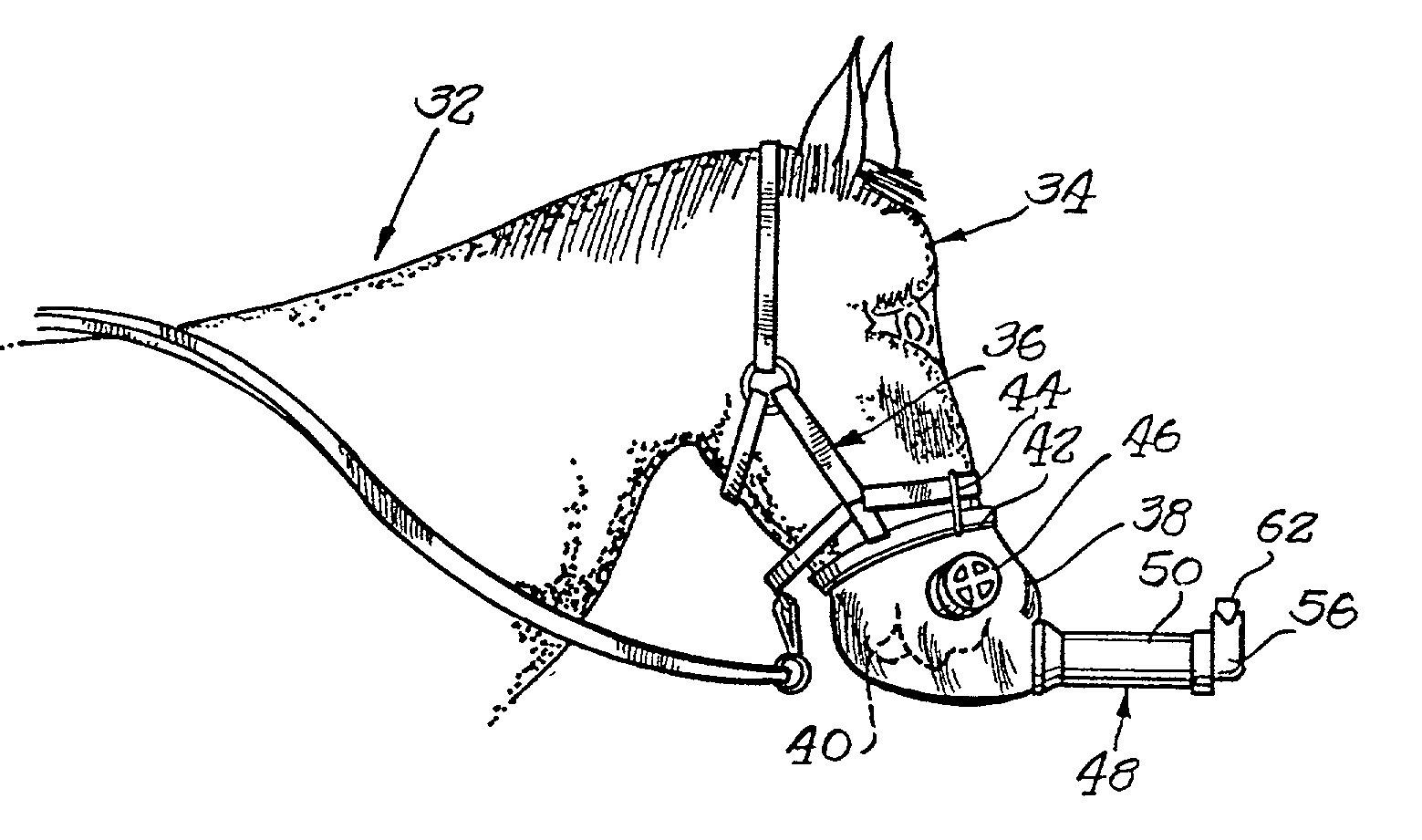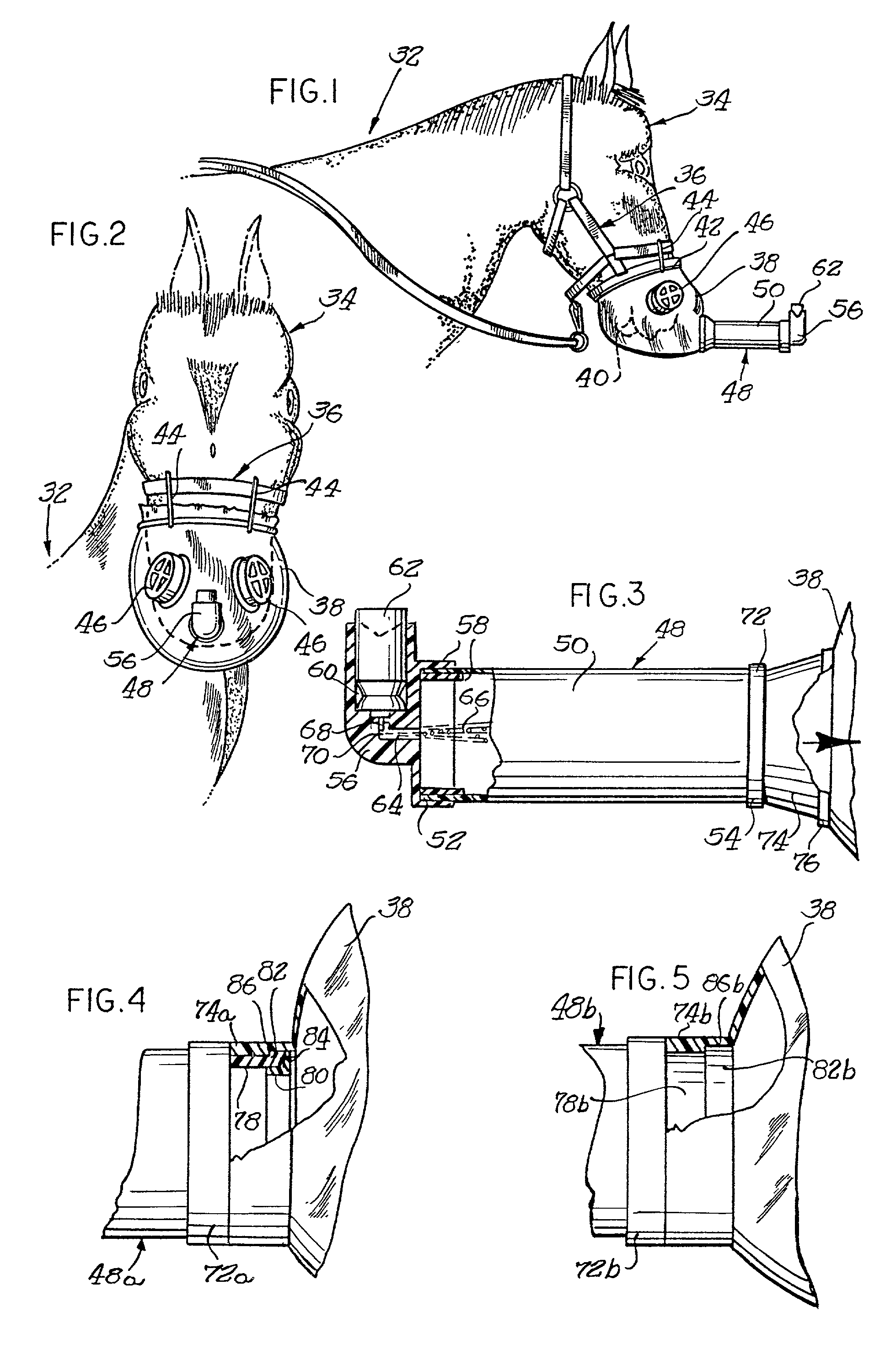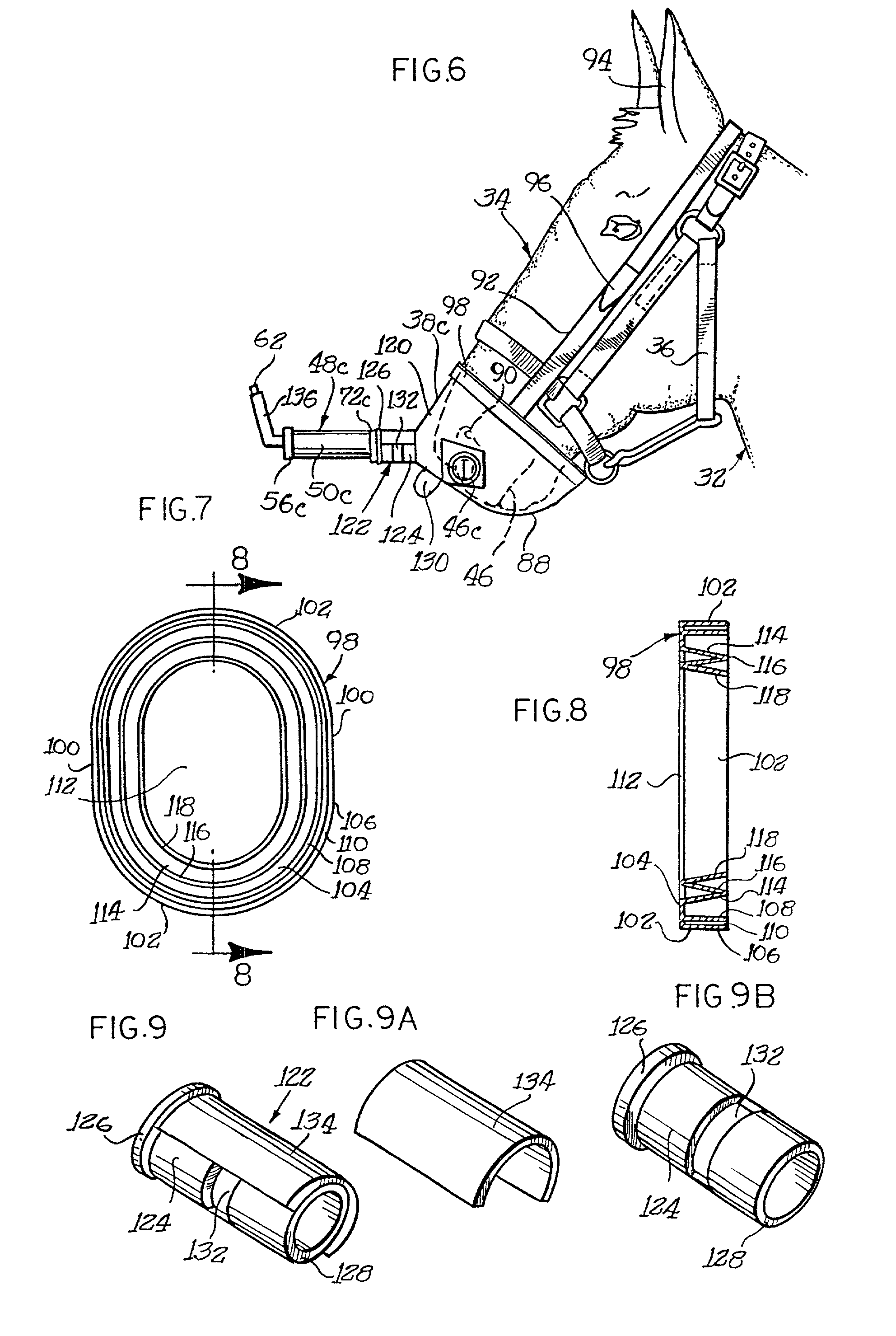Equine mask
a mask and equine technology, applied in the field of equine masks, can solve the problems of inability to use epinephrine, and inability to fully discharge, etc., and achieve the effect of reducing the risk of infection, and facilitating the attachment of the hors
- Summary
- Abstract
- Description
- Claims
- Application Information
AI Technical Summary
Benefits of technology
Problems solved by technology
Method used
Image
Examples
first embodiment
[0053] Alternatives for First Embodiment Inhaler Attachment
[0054] A modification of the attachment of the mask to the inhaler is shown in FIG. 4, this being very similar to what is disclosed in the aforesaid Foley et al U.S. patent. Certain other parts are the same as those here to afore disclosed, and identified with similar numerals with the addition of the suffix a. The outlet fitting 72 includes a cylinder extending in the downstream direction, and having secured at the downstream end thereof inner and outer flanges 80 and 82, respectively, interconnected by a radial web 84. The portion 74a at the front end of the mask 38 is cylindrical rather than flared, and has an internal diameter to fit over the outside of the cylindrical portion 78, being recessed at 86 to fit over the flange 82, whereby the mask is anchored to the inhaler.
[0055] A further modification is shown in FIG. 5. Similar parts again are identified by like numerals, this time with the addition of the suffix b. In t...
second embodiment (figs.6-9)
[0056] b. Second Embodiment (FIGS. 6-9)
[0057] Another eariler preferred form of the invention is shown in FIGS. 6-9. The horse is identical, and portions of the invention are the same or similar to those heretofore shown and described, and in this instance are identified by like numerals with the addition of the suffix c.
[0058] The mask 36c is provided at the lower portion with a "dribble-section" or "slobbering cup" 88. Horses often sputter when relaxed, and this portion serves as a collecting place for sputtered saliva.
[0059] The two exhalation ports 46c are lowered slightly from their position in FIGS. 1 and 2, whereby the nostrils 90 of the horse are visible in FIG. 6. A strap 92 extends from two discrete locations at the top edge of the mask 38c, passing behind the horse's head immediately behind the ears 94. The strap is provided with what might be called a buckle section 96, with opposing portions having hook and loop fasteners (Viz., VELCRO).
[0060] The upper edge of the mask...
sixth embodiment (figs.14-16)
[0076] f. Sixth Embodiment (FIGS. 14-16)
[0077] A somewhat different form of the invention is shown in FIGS. 14-16. The numerals used for various portions of the horse and harness remain identical with those previously used. Insofar as portions of the mask are similar to those heretofore used, similar numerals are used with the addition of the suffix g. The form of the invention in FIGS. 14-16 is somewhat skeletonized compared with previous embodiments. Mask 38 includes a hollow body 168 with a tubular entrance end 170 extending thereinto. The cylindrical body 48g of the aerosolization chamber 50g plugs directly into the tubular entrance 170 of the hollow body 168. The single exhalation port 46g is mounted on the top or frontal portion of the hollow body. Hollow side branches 172 extend from the body to the vicinity of the horse's nostrils 90, and substantially cylindrical cups 174 extend therefrom to overlie the nostrils 90, thus establishing communication between aerosolizing chamb...
PUM
 Login to View More
Login to View More Abstract
Description
Claims
Application Information
 Login to View More
Login to View More - R&D
- Intellectual Property
- Life Sciences
- Materials
- Tech Scout
- Unparalleled Data Quality
- Higher Quality Content
- 60% Fewer Hallucinations
Browse by: Latest US Patents, China's latest patents, Technical Efficacy Thesaurus, Application Domain, Technology Topic, Popular Technical Reports.
© 2025 PatSnap. All rights reserved.Legal|Privacy policy|Modern Slavery Act Transparency Statement|Sitemap|About US| Contact US: help@patsnap.com



